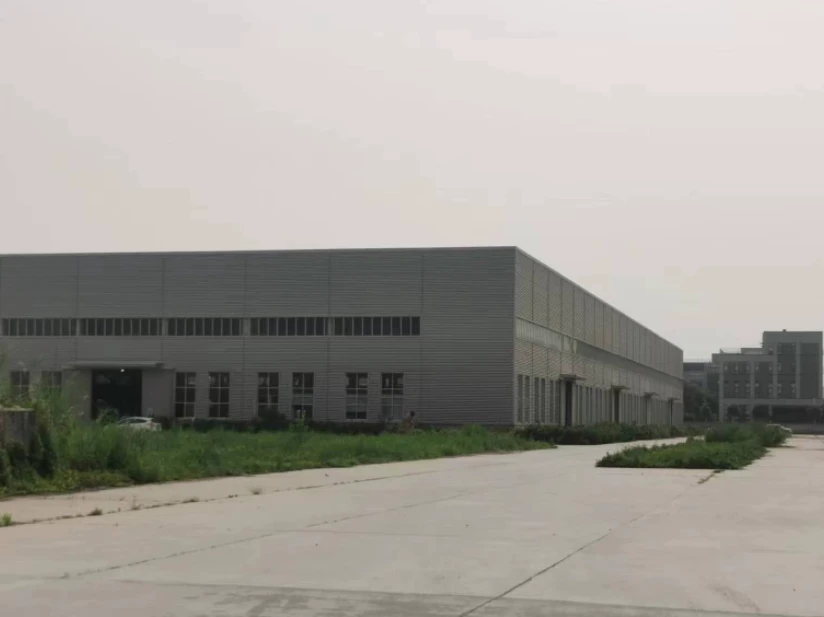cable tray roll forming machine
Understanding Cable Tray Roll Forming Machines
In today’s rapidly advancing industrial landscape, the demand for efficient and reliable cable management solutions has never been higher. One of the essential tools in the production of cable trays is the cable tray roll forming machine. This advanced equipment is designed to produce a variety of cable trays with precision, improving both quality and productivity in electrical installations.
What is a Cable Tray Roll Forming Machine?
A cable tray roll forming machine is a specialized piece of equipment used to manufacture cable trays from metal sheets. The process involves feeding metal sheets into a series of rollers that shape and form the material into a predetermined profile. The machine can handle various materials, including steel, aluminum, and stainless steel, which allows for the production of trays suited for different environmental conditions and load requirements.
The Importance of Cable Trays
Cable trays are vital components in electrical installations, providing a supportive structure for holding electrical cables and wires. They are commonly used in commercial buildings, industrial facilities, and infrastructure projects. The advantages of using cable trays include
1. Organization They provide a systematic way to run cables, ensuring easier installation and maintenance. 2. Protection Cable trays help protect cables from physical damage, exposure to chemicals, and environmental factors, thereby enhancing the longevity of the cables.
3. Flexibility They allow for easy relocation and reconfiguration of electrical systems, which is crucial for scaling operations or adapting to new technologies.
The Roll Forming Process
cable tray roll forming machine

The roll forming process starts with the preparation of raw material, usually in coil form. The coil is unwound and fed into the roll forming machine, which consists of a series of rollers. Each roller progressively shapes the material, bending it into the desired profile. The machine can produce various designs of cable trays, including ladder-type trays, perforated trays, and solid-bottom trays, depending on the specific requirements.
Once the trays reach the final shape, they are cut to size, usually by a flying shearing mechanism that ensures precision and minimizes waste. Advanced cable tray roll forming machines can also include features like punching and notch-making, allowing for the integration of additional functionalities directly during the forming process.
Features of Modern Cable Tray Roll Forming Machines
1. Automation Modern roll forming machines are increasingly automated, requiring minimal manual intervention. This automation improves efficiency and reduces labor costs.
2. Customization Many machines offer customizable options to produce tailored solutions based on customer specifications. This flexibility is essential for businesses looking to meet specific project requirements.
3. High Production Speed Advanced technology allows for high-speed production without compromising quality. This capability is vital in industries where time is a critical factor.
4. Durability and Reliability Machines are designed with robust materials that ensure longevity, even under high-volume production conditions. Reliability is crucial for manufacturers who depend on consistent output quality.
Conclusion
The importance of cable tray roll forming machines in the electrical industry cannot be overstated. They play a critical role in the mass production of cable management systems, allowing for efficiency, customization, and adaptability. As the demand for effective cable management solutions continues to rise, the evolution of roll forming technology will likely keep pace, incorporating smart features and enhanced capabilities. This ensures that manufacturers can meet ever-changing industry standards while providing products that enhance safety and organization in electrical installations.
Investing in state-of-the-art cable tray roll forming machines is a strategic move for manufacturers aiming to excel in a competitive market, ultimately contributing to smoother operations and greater customer satisfaction. With the right equipment, companies can ensure they are well-equipped to handle current demands and future challenges in cable management.
-
High Frequency Straight Seam Welded Pipe Production Line-BzZhou Xinghua Machinery Equipment Manufacturing Co., LTD.|line pipe steel&welded gas pipeNewsJul.30,2025
-
High Frequency Straight Seam Welded Pipe Production Line-BzZhou Xinghua Machinery Equipment Manufacturing Co., LTD.|High Precision&Automated SolutionsNewsJul.30,2025
-
High Frequency Straight Seam Welded Pipe Production Line - BzZhou Xinghua Machinery Equipment Manufacturing Co., Ltd.NewsJul.30,2025
-
High Frequency Straight Seam Welded Pipe Production Line-BzZhou Xinghua Machinery Equipment Manufacturing Co., LTD.|Precision Welding, High EfficiencyNewsJul.30,2025
-
High Frequency Straight Seam Welded Pipe Production Line|BzZhou Xinghua|Precision Welding&EfficiencyNewsJul.30,2025
-
High Frequency Straight Seam Welded Pipe Production Line - BzZhou Xinghua|Precision Engineering&EfficiencyNewsJul.30,2025


